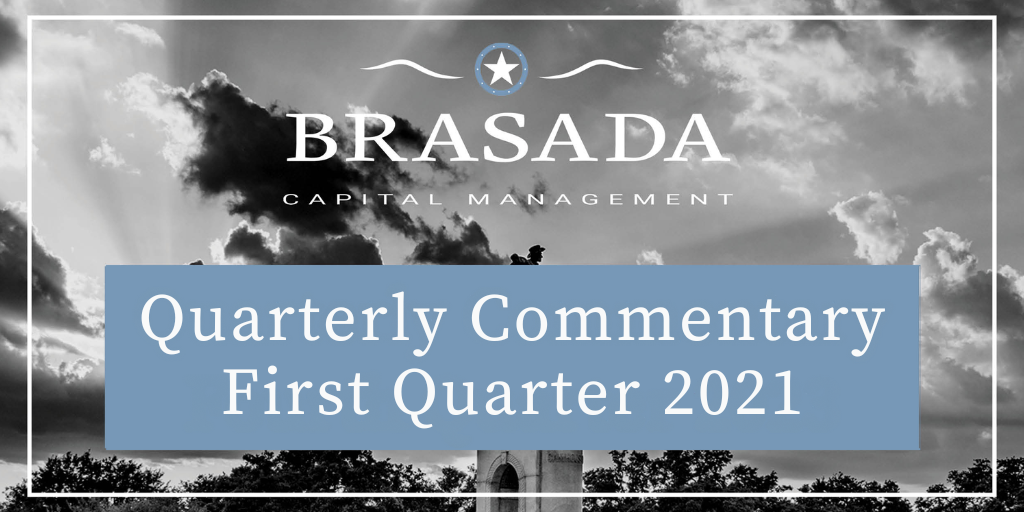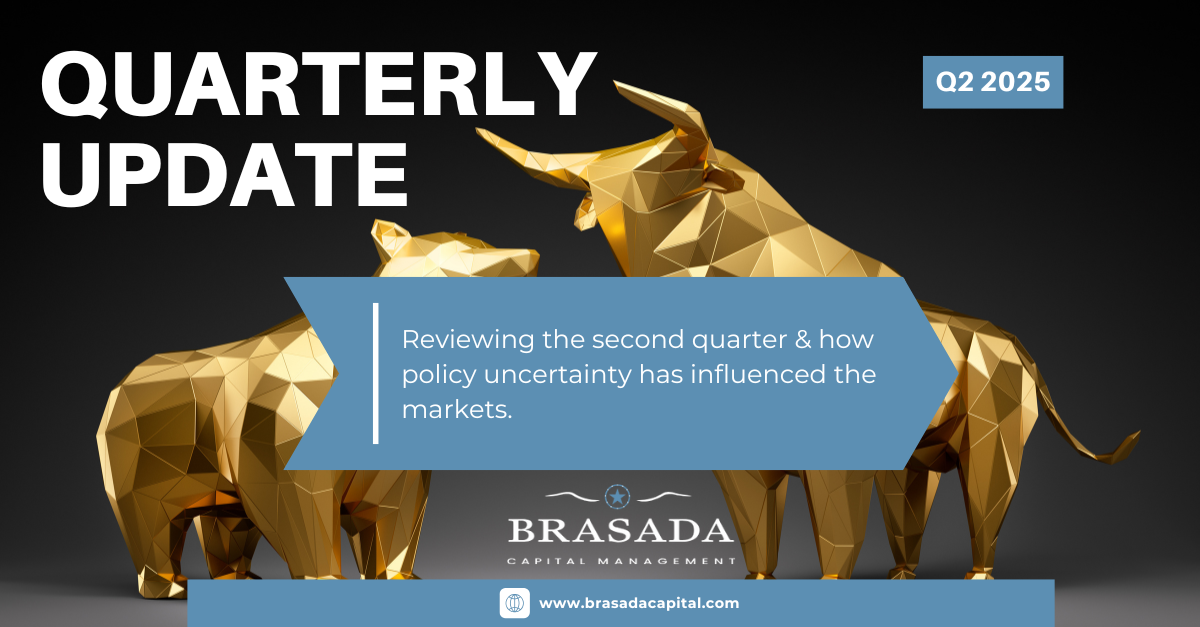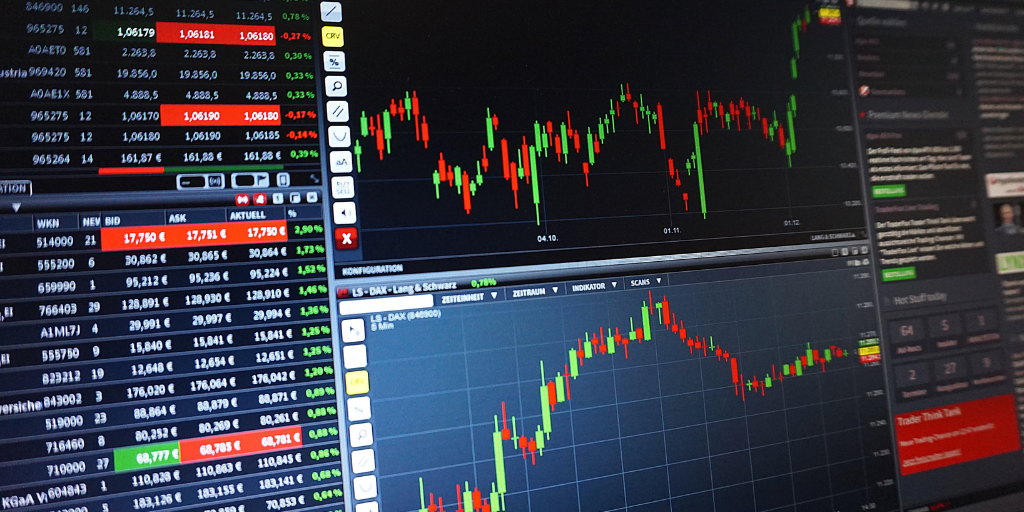Second Quarter of 2025
“Far more money has been lost by investors preparing for corrections or trying to anticipate corrections than has been lost in corrections...
4 min read
Brasada : Apr 1, 2021 11:41:00 AM

A year ago Congress passed a $2 trillion stimulus package to mitigate the economic damage caused by the coronavirus pandemic. This coincided with the end of the shortest Bear Market in US history. As it stands now, vaccinations have been administered to 35% of the U.S. population, and Congress passed yet another pandemic stimulus package just short of $2 trillion.
Throughout the past tumultuous 12 months, we discussed in our quarterly letters that the market prices stocks based on their future outlook. As everyone was looking around seeing schools, businesses, and restaurants close and regular life grind to a halt, the idea of a bright future seemed far off and stock prices seemed ‘dislocated from reality’. Sticking with that paradox, thanks to the historic vaccination effort, both in development and distribution, life is returning to normal and the stock market continues to move higher, but at a more gradual pace. So what is muddling investor’s expectations in the future, when economic growth
is bounding upward?
There are several factors, but they coalesce around rising inflation due to an overstimulated economy. High inflation is the bane of an overleveraged economy such as ours. Last year, the 10-year U.S. Treasury Bond dropped from 1.9% to 0.6%, as expectations of economic activity dropped and the Fed kept rates low (to put it all mildly). As the economy rebounded, so too did the 10-year, now sitting at 1.7%. Stimulus checks and excess savings are the dry powder for what is expected to be a consumer boom as people fully return to normal life. Further, $3 trillion in infrastructure and other government spending bills are being debuted
as we write this. Adding to inflationary pressure, supply chains across the globe are stretched, semiconductors are in short supply, and Chinese factories are at full utilization saying price increases are on the way. Offsetting these inflationary forces are the over 10 million people in this country out of work, hundreds of billions in additional government debt, tens of billions in back rent due, an elevated number of foreclosures waiting on expiration of a moratorium, possible tax increases, and the disinflationary effects from the growth in digitization that occurred due to the pandemic.
Here we have six of one and half-a-dozen of the other, no wonder the market can’t make up its mind. So where do we go after we can finally leave the house? As the saying goes “History never repeats itself, but it does rhyme” and here is no different despite what feels like uncharted territory. Shown below is the S&P 500’s price performance following the bottom of two ‘big’ recessions that closely matched the market performance after March 2020.

Image Source: Strategas, 3/22/21.
As you can see, recoveries follow moderately similar trajectories. The first year off the bottom is characterized by large gains in the face of the current crisis. The second year of the recovery is generally up, but more difficult as the market internalizes the gains made earlier and participants try to discern where to go once ‘the dog has caught the car’ so to speak. This phenomenon has occurred in varying degrees in the last 10 recessions, as summarized below.

Image Source: Strategas, 3/22/21.
Given this historical perspective, we expect the stock market to move higher this year, but less so than last year, which may seem more frustrating as everyone gets excited about seeing relatives, going on trips, and eating at their favorite restaurants. We expect the bond market to remain under pressure due to fears over interest rates moving higher. Year-to-date, the S&P 500 has gained 6.2% and the Barclays Bond Index is down 3.4%. Our estimated composite returns year-to-date, net of fees, are as follows:
Brasada US Equity: +6.9%
Friedberg Equity Income: +4.5%
Friedberg Dividend Growth: +2.8%
Friedberg Focused Equity: +2.5%
Brasada REIT Preferred: -0.7%
As the recovery progresses, drawdowns are likely to occur and we remain as vigilant as ever in owning companies that have good management teams, strong competitive advantages, long term growth opportunities, and desirable returns on capital. As discussed above, inflation is the focal point for many investors as we exit the pandemic, but as long term investors, we find it is much more productive to focus on finding companies that perform well in any environment. Today, we’re finding opportunities in areas such as software, advertising technology, railroads, renewable energy, semiconductors, and real estate.
We appreciate the confidence you have placed in us and wish you the best.
Sincerely,
Daniel Scott Prather, CFA
This quarterly update is being furnished by Brasada Capital Management, LP (“Brasada”) on a confidential basis and is intended solely for the use of the person to whom it is provided. It may not be modified, reproduced or redistributed in whole or in part without the prior written consent of Brasada. This document does not constitute an offer, solicitation or recommendation to sell or an offer to buy any securities, investment products or investment advisory services or to participate in any trading strategy.
The net performance results are stated net of all management fees and expenses and are estimated and unaudited. These returns reflect the reinvestment of any dividends and interest and include returns on any uninvested cash. In addition to management fees, the managed accounts will also bear its share of expenses and fees charged by underlying investments. The fees deducted herein represent the highest fee incurred by any managed account during the relevant period. Past performance is no guarantee of future results. Certain market and economic events having a positive impact on performance may not repeat themselves. The actual performance results experienced by an investor may vary significantly from the results shown or contemplated for a number of reasons, including, without limitation, changes in economic and market conditions.
References to indices or benchmarks are for informational and general comparative purposes only. There are significant differences between such indices and the investment program of the managed accounts. The managed accounts do not necessarily invest in all or any significant portion of the securities, industries or strategies represented by such indices and performance calculation may not be entirely comparable. Indices are unmanaged and have no fees or expenses. An investment cannot be made directly in an index and such index may reinvest dividends and income. References to indices do not suggest that the managed accounts will, or is likely to achieve returns, volatility or other results similar to such indices. Accordingly, comparing results shown to those of an index or
benchmark are subject to inherent limitations and may be of limited use.
Certain information contained herein constitutes forward looking statements and projections that are based on the current beliefs and assumptions of Brasada and on information currently available that Brasada believes to be reasonable. However, such statements necessarily involve risks, uncertainties and assumptions, and prospective investors may not put undue reliance on any of these statements. Due to various risks and uncertainties, actual events or results or the actual performance of any entity or transaction may differ materially from those reflected or contemplated in such forward-looking statements. The information contained herein is believed to be reliable but no representation, warranty or undertaking, expressed or implied, is given to the accuracy or completeness of such information by Brasada.

“Far more money has been lost by investors preparing for corrections or trying to anticipate corrections than has been lost in corrections...

UNDERSTANDING TARIFFS: ECONOMIC IMPACT, RATIONALE AND CONTROVERSIES

Market Selloff Dear Clients and Friends, Thursday and Friday marked the 4th time in the last 50 years when the S&P 500 had a 2-day drop of over...